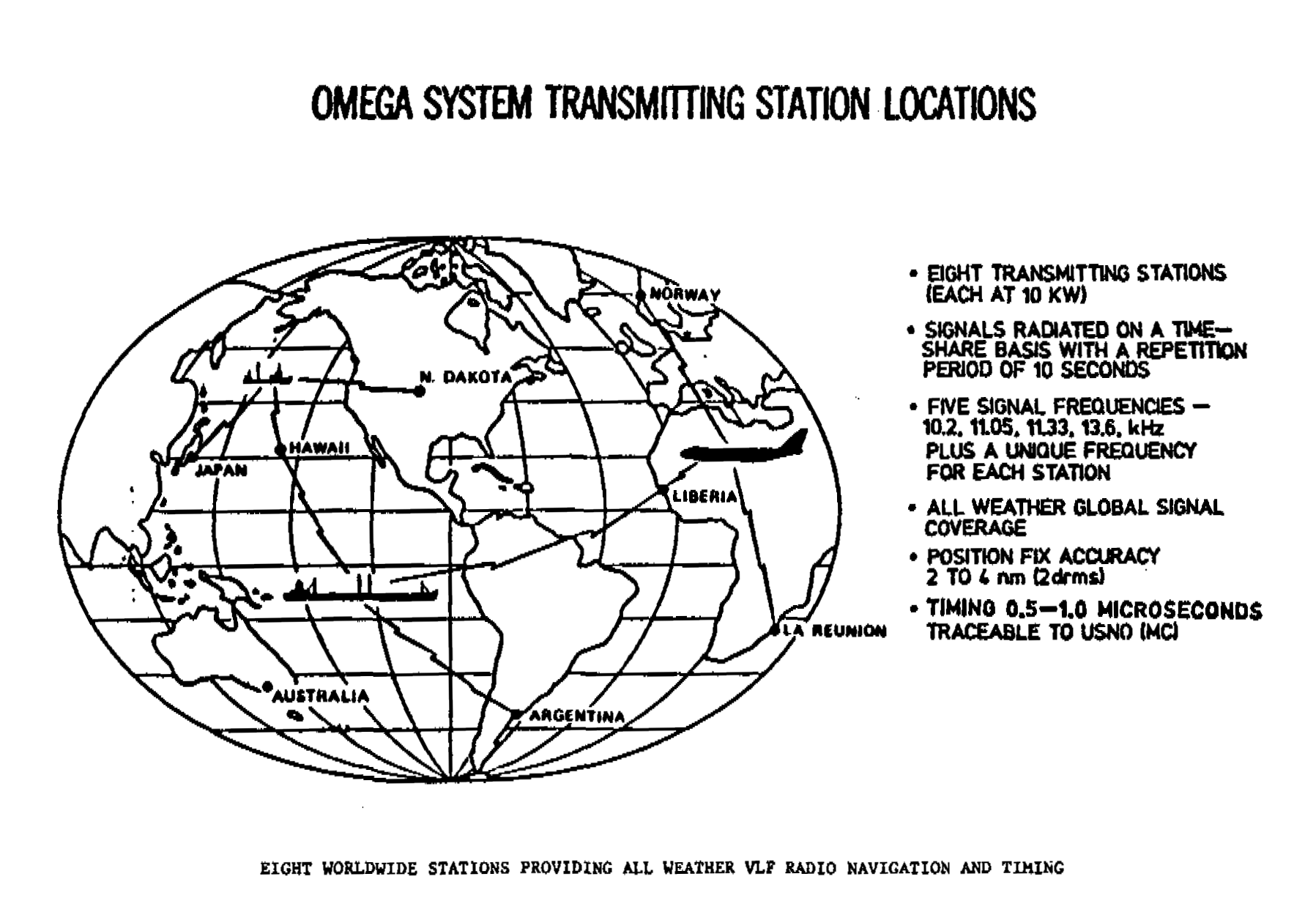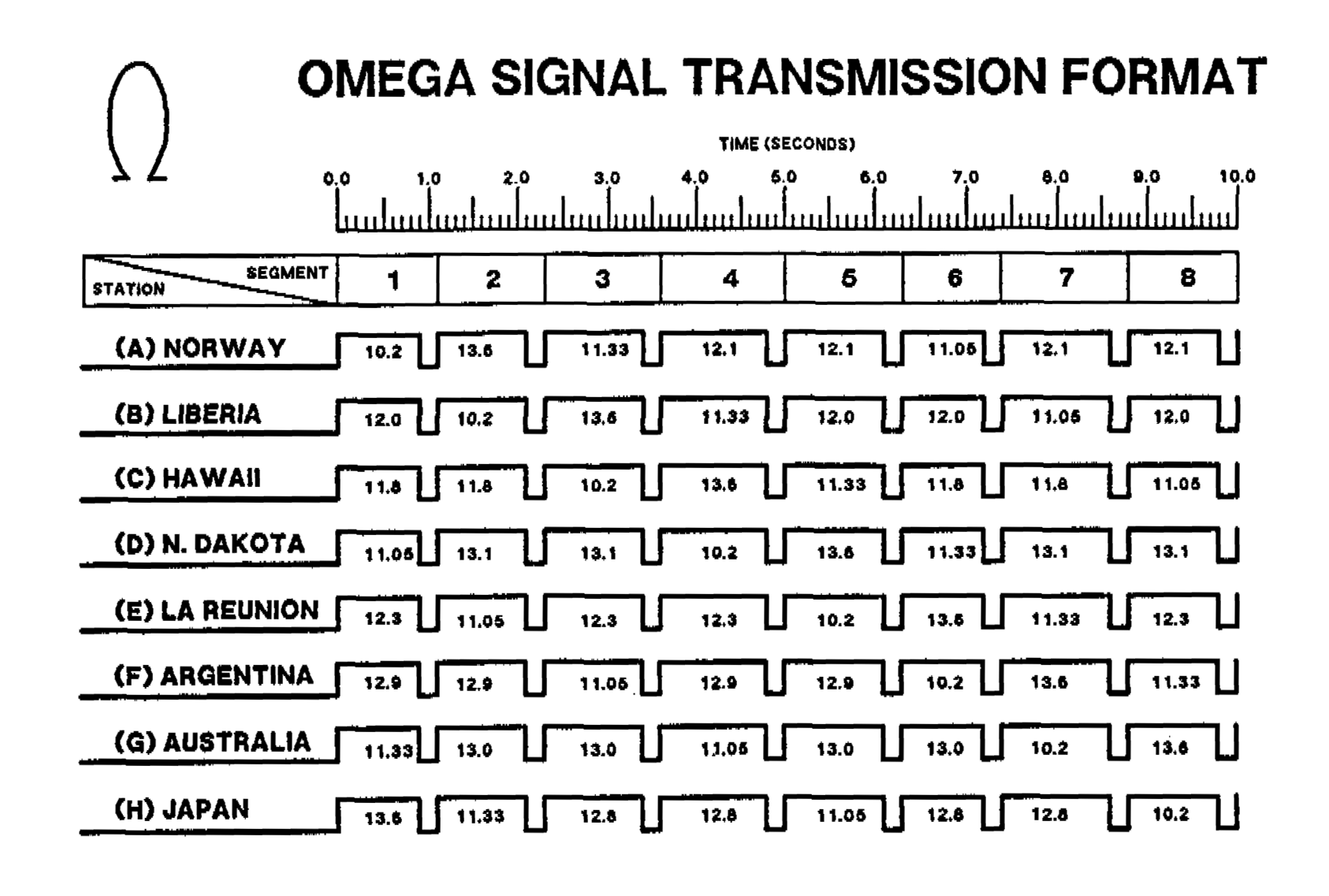| |
|
Omega Radionavigation System
|
Omega was one of the first global radionavigation systems. It operated in the VLF portion of the radio spectrum, and its eight stations spread around the globe allowed hyperbolic fixes to an accuracy of 2-4 nautical miles (about 2.2-4.4 miles). Omega was typically used for navigation by ships and airplanes.
The eight Omega stations were located in Norway, Liberia, Hawaii, North Dakota, La Reunion, Argentina, Australia, and Japan. Each transmitted, in a predetermined sequence, on four common frequencies of 10.2, 11.05, 11.33, and 13.6 kHz, and on one additional frequency that was unique to each transmitter site.
Development and initial deployment of Omega began in the 1960's, and the full deployment of eight stations was operational in 1987. Omega operations were formally terminated on September 30th, 1997, at 0300 UT, its functions having been replaced by modern GPS.
|
Frequencies |
| Frequency | Bandwidth | Use | Service | Table |
| 10.2 kHz | 0.05 kHz | Omega (used by all eight sites) | Radionavigation | F |
| 11.05 kHz | 0.05 kHz | Omega (used by all eight sites) | Radionavigation | F |
| 11.33 kHz | 0.05 kHz | Omega (used by all eight sites) | Radionavigation | F |
| 11.8 kHz | 0.05 kHz | Omega (Hawaii site only) | Radionavigation | F |
| 12 kHz | 0.05 kHz | Omega (Liberia site only) | Radionavigation | F |
| 12.1 kHz | 0.05 kHz | Omega (Norway site only) | Radionavigation | F |
| 12.3 kHz | 0.05 kHz | Omega (La Reunion site only) | Radionavigation | F |
| 12.8 kHz | 0.05 kHz | Omega (Japan site only) | Radionavigation | F |
| 12.9 kHz | 0.05 kHz | Omega (Argentina site only) | Radionavigation | F |
| 13 kHz | 0.05 kHz | Omega (Australia site only) | Radionavigation | F |
| 13.1 kHz | 0.05 kHz | Omega (North Dakota site only) | Radionavigation | F |
| 13.6 kHz | 0.05 kHz | Omega (used by all eight sites) | Radionavigation | F |
Associated Files:

Omega station locations (from "The Evolution of Synchronization in the World-Wide Omega Navigation System," Vannicola & McManus).

Omega signal transmission format (from "The Evolution of Synchronization in the World-Wide Omega Navigation System," Vannicola & McManus).
|
|
|
|
|